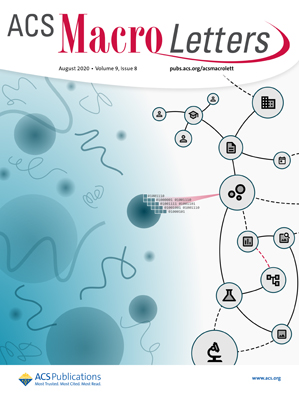Toward Quantitative End-Group Fidelity in the Synthesis of High Molecular Weight Polysarcosine
IF 5.1
Q1 POLYMER SCIENCE
引用次数: 0
Abstract
Polymers applied in pharmaceutical applications need to meet stringent quality standards to ensure reproducibility of product properties, such as efficacy and safety of therapeutics. End-group fidelity is a crucial quality feature that ensures functional integrity, reproducible synthesis, and robust therapeutic performance. The contemporary production of poly(ethylene glycol) (PEG) exemplifies this requirement, which has consolidated its position as a gold standard in pharmaceutical applications. However, modest to severe immune responses toward PEG in patients generate the need for alternative polymers in the development of pharmaceuticals or cosmetics. Among such alternatives, polysarcosine (pSar) displays PEG-like stealth properties in vivo while displaying improved immunogenicity and toxicity profiles, generating the need for heterotelechelic pSar polymers of the highest end-group integrity. Here, we compared current synthetic methods for the controlled synthesis of pSar over a broad molecular weight range and assessed the end-group fidelity by ion exchange chromatography. Subsequent isolation allowed the identification of impurities via mass spectrometry, thus yielding mechanistic insights into the N-substituted N-carboxyanhydride ring-opening polymerization (ROP). Our results reveal a nuanced role of organocatalysts in the ROP, highlighting opportunities for better catalysts. Finally, this work showcases a scalable purification method to obtain high molecular weight pSar with quantitative end-group fidelity.

高分子量聚arcos合成中定量端基保真度的研究
用于制药应用的聚合物需要满足严格的质量标准,以确保产品特性的可重复性,例如治疗药物的有效性和安全性。端群保真度是确保功能完整性、可重复合成和稳健治疗性能的关键质量特征。聚乙二醇(PEG)的当代生产体现了这一要求,这巩固了其在制药应用中的黄金标准地位。然而,在药物或化妆品的开发中,患者对PEG的适度到严重的免疫反应产生了对替代聚合物的需求。在这些替代品中,聚arcos (pSar)在体内显示出类似peg的隐身特性,同时显示出更好的免疫原性和毒性特征,从而产生了对端基完整性最高的杂络合物pSar聚合物的需求。在这里,我们比较了目前在广泛分子量范围内控制合成pSar的合成方法,并通过离子交换色谱法评估了端基保真度。随后的分离允许通过质谱鉴定杂质,从而对n -取代n -羧基氢化物开环聚合(ROP)的机理有了深入的了解。我们的研究结果揭示了有机催化剂在ROP中的微妙作用,强调了更好的催化剂的机会。最后,这项工作展示了一种可扩展的纯化方法,以获得具有定量端基保真度的高分子量pSar。
本文章由计算机程序翻译,如有差异,请以英文原文为准。
求助全文
约1分钟内获得全文
求助全文
来源期刊
CiteScore
10.40
自引率
3.40%
发文量
209
审稿时长
1 months
期刊介绍:
ACS Macro Letters publishes research in all areas of contemporary soft matter science in which macromolecules play a key role, including nanotechnology, self-assembly, supramolecular chemistry, biomaterials, energy generation and storage, and renewable/sustainable materials. Submissions to ACS Macro Letters should justify clearly the rapid disclosure of the key elements of the study. The scope of the journal includes high-impact research of broad interest in all areas of polymer science and engineering, including cross-disciplinary research that interfaces with polymer science.
With the launch of ACS Macro Letters, all Communications that were formerly published in Macromolecules and Biomacromolecules will be published as Letters in ACS Macro Letters.

 求助内容:
求助内容: 应助结果提醒方式:
应助结果提醒方式:


